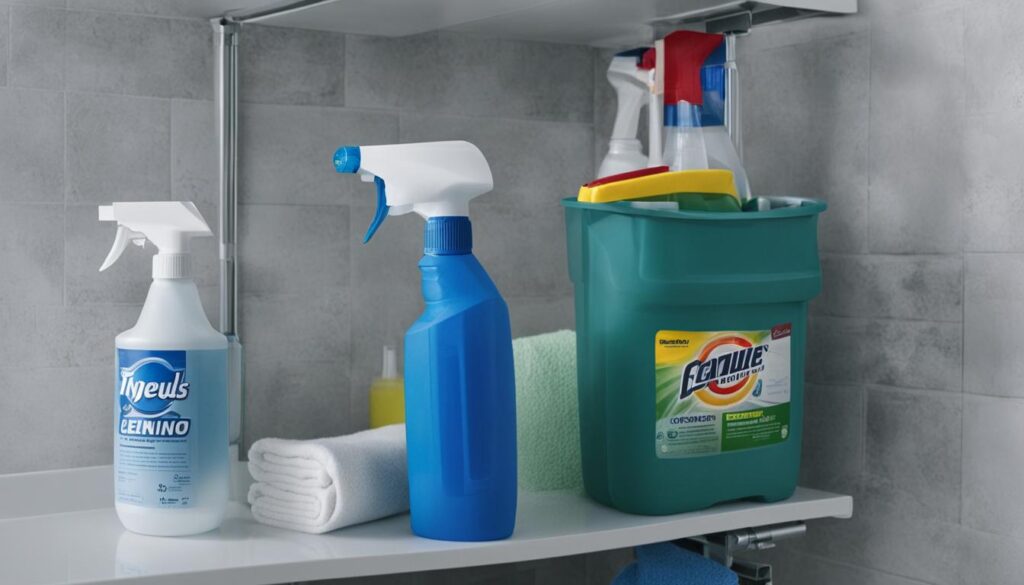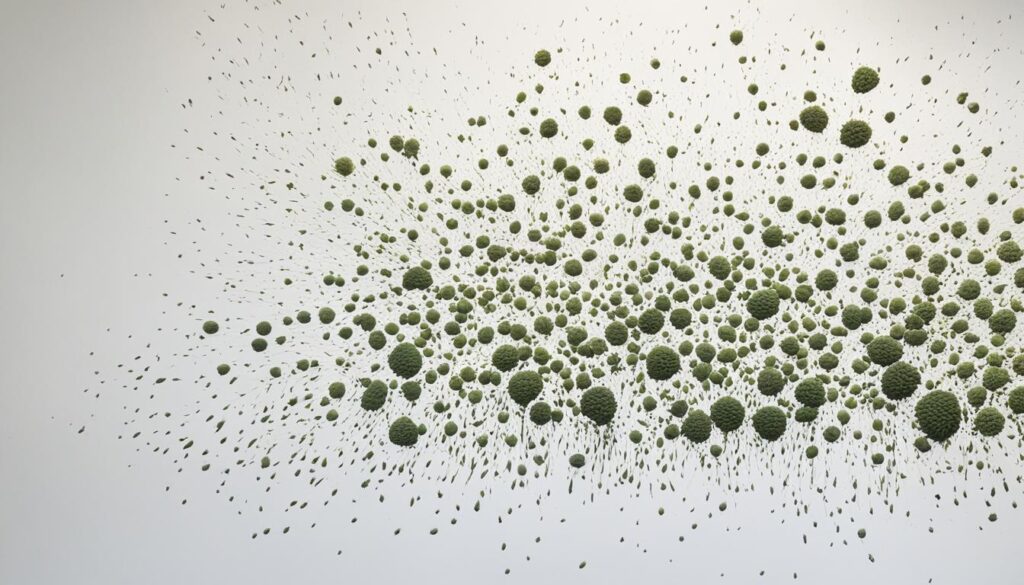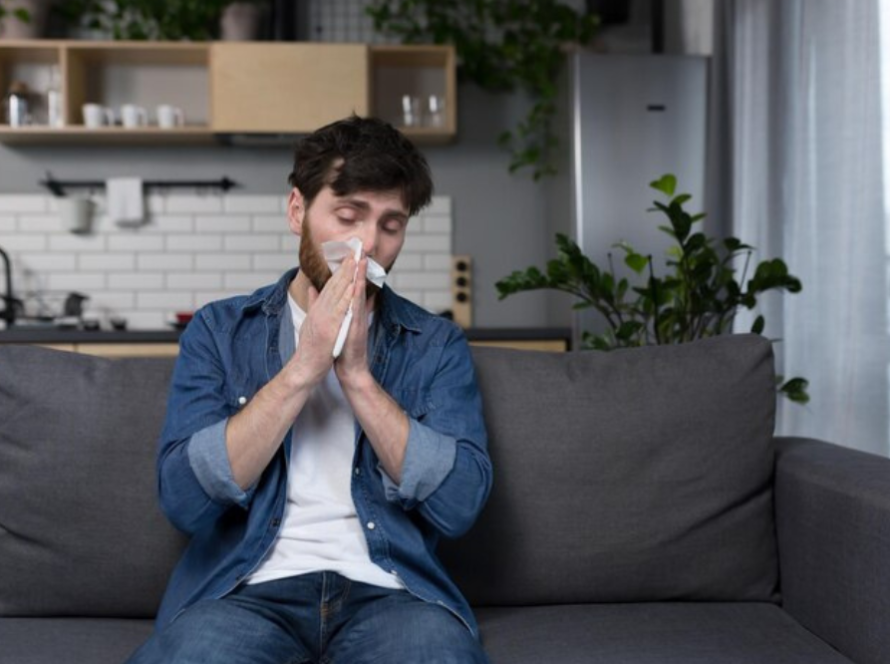If you have noticed fungus growing on your walls, it is essential to take immediate action to prevent its spread. Fungus on walls is not only unsightly, but it can also pose health risks to you and your family. You must equip yourself with knowledge on how to get rid of fungus on walls.
This section will provide you with expert tips on removing and preventing fungus on walls. You will learn about the different treatment methods and remedies to combat wall fungus and the causes of wall fungus, the health risks associated with it, and do-it-yourself solutions.
Key Takeaways:
- Wall fungus can pose serious health risks, so it’s essential to take it seriously.
- Signs of wall fungus include discoloration, musty odors, and peeling paint or wallpaper.
- Prevent wall fungus by controlling humidity levels, fixing leaky pipes, and ventilating your home.
- Do-it-yourself solutions such as vinegar and baking soda can be effective in removing wall fungus.
- Professional help is necessary for severe cases of wall fungus or when there is an underlying issue causing the fungus growth.
Understanding Fungus on Walls
Fungus on walls can grow unnoticed until it becomes a serious issue. It is essential to know the signs of wall fungus to prevent it from further spreading and causing structural damage to your home.
One of the most common signs of fungus on walls is discoloration. You may notice dark spots or patches on the walls where moisture is present. The odor is also a sign of wall fungus, and it is usually musty and earthy.
Wall fungus can grow due to a variety of reasons, including poor ventilation, leaking pipes, and high levels of humidity. It is important to address these issues to prevent the growth of wall fungus.
Identifying the signs of fungus on walls is crucial in preventing its growth and spreading. In the next section, we will discuss the health risks associated with wall fungus and why it is crucial to remove it from your home.
The Health Risks of Wall Fungus
Wall fungus can not only damage the aesthetic appeal of your home but also pose significant health risks to you and your loved ones. Exposure to wall fungus can cause a range of respiratory problems and allergies, particularly in vulnerable individuals including children, the elderly, and those with weakened immune systems.
Some of the common health risks associated with wall fungus include:
| Allergies: | Wall fungus can trigger allergies such as sneezing, coughing, watery eyes, and runny nose in susceptible individuals. |
|---|---|
| Asthma: | Exposure to wall fungus can aggravate asthma symptoms, leading to coughing, wheezing, and shortness of breath. |
| Pneumonia: | In severe cases, inhaling wall fungus spores can cause pneumonia, especially in people with weakened immune systems or underlying respiratory conditions. |
To protect yourself and your family from these health risks, it’s crucial to remove wall fungus as soon as possible and take preventive measures to reduce its presence in your home.
Removing Fungus on Walls: Step-by-Step Guide
Fungus on walls can be unsightly and poses a health risk to you and your family. If left untreated, it can cause respiratory problems and allergies. Here is a step-by-step guide on how to safely remove fungus on walls.
- Identify the areas of your wall affected by fungus. Use protective gloves and a mask to avoid inhaling the spores, which can trigger allergies.
- Remove any loose or flaking paint from the affected areas on the wall. Use a scraper, taking care not to damage the surface underneath.
- Scrub the affected walls with a mixture of water and vinegar using a sponge or soft-bristle brush. For stubborn stains, use a mixture of 1-part bleach to 3-parts water.
- Rinse the wall with clean water and allow it to dry completely. Use a fan or dehumidifier to speed up the drying process.
- Once the wall is dry, use a moisture meter to determine if the moisture content in the wall is above normal. If it is, you may need to repair any leaks or ventilation issues that are causing the moisture buildup.
- If the fungus has spread to a large area, it is recommended to hire a professional to assess the situation and provide remediation services.
Remember to wear protective gear when handling fungus on walls and avoid touching your face and eyes. Regularly cleaning your walls and maintaining a dry environment can prevent the recurrence of wall fungus.
DIY Wall Fungus Solutions
Looking for effective and affordable ways to get rid of fungus on walls? Here are some DIY wall fungus solutions that you can try at home:
Vinegar Solution
Vinegar is a natural disinfectant that can remove fungus from walls. Mix equal parts of water and vinegar in a spray bottle and spray the solution on the affected area. Scrub the area with a brush and then rinse with warm water.
Baking Soda Paste
Baking soda can effectively remove fungus on walls. Mix baking soda with water to form a paste, and apply it to the affected area. Let it sit for a few minutes and then scrub the area with a brush before rinsing with warm water.
Tea Tree Oil Spray
Tea tree oil has antifungal properties that make it an effective solution for wall fungus. Mix a few drops of tea tree oil with water in a spray bottle and spray the solution on the affected area. Let it sit for a few minutes before wiping it away with a clean cloth.
Remember to wear protective gear such as gloves and a mask when handling fungus on walls to prevent inhaling spores.
Professional Wall Fungus Remedies
If you’re dealing with stubborn wall fungus, it may be time to consider professional remedies. These products and treatments are specially designed to effectively combat wall fungus, with proven results.
Antifungal Paints
A popular professional remedy for wall fungus is antifungal paint. This type of paint contains active ingredients that prevent the growth of fungus, making it an effective solution for both removal and prevention.
| Pros | Cons |
|---|---|
| Long-lasting | May be more costly than regular paint |
| Easy to apply | May not be suitable for severe cases of wall fungus |
| Available in many colors and finishes | May require multiple coats for best results |
Chemical Treatments
Chemical treatments are another option for removing wall fungus. These solutions contain strong ingredients that can effectively kill fungus spores and prevent further growth. However, it is important to use these treatments with caution, as they can also pose health risks if not applied correctly.
| Pros | Cons |
|---|---|
| Quick and effective | Potentially hazardous if not used properly |
| Can reach areas that are difficult to access | May require professional assistance for application |
| Long-lasting results | May damage certain surfaces if not tested first |
Fungicide Sprays
Fungicide sprays are another professional remedy for wall fungus. They contain active ingredients that can kill fungus spores on contact, preventing further growth. However, it is important to follow instructions carefully when using these sprays, as they can also pose health risks if not used correctly.
| Pros | Cons |
|---|---|
| Quick and effective | Potentially hazardous if not used properly |
| Easy to use | May require multiple applications for best results |
| Long-lasting results | May not be suitable for severe cases of wall fungus |
When considering professional wall fungus remedies, it is important to consult with a professional to determine the best solution for your specific situation.
Preventing Fungus on Walls: Tips and Techniques
Prevention is the key to keeping your walls free from fungus. Here are some tips and techniques to create an environment that discourages the growth of wall fungus:
- Control humidity: A high level of moisture is a significant factor contributing to the growth of fungus on walls. An ideal humidity level should be maintained to prevent fungus growth. Regularly clean air conditioning units, leaky faucets, and pipes.
- Ventilation: Proper ventilation is essential in preventing fungus growth on walls. Ensure that bathrooms, kitchens, and laundry rooms have proper ventilation to prevent moisture from accumulating.
- Regular cleaning: Dusting, vacuuming, and wiping surfaces regularly can help prevent fungus growth on walls. Regular cleaning removes dust, dirt, and other debris that can contribute to wall fungus growth.
- Insulation: Proper insulation helps to keep your walls dry and prevents condensation. It is essential to insulate your home correctly to prevent wall fungus growth.
- Sunlight: Natural sunlight can help keep your walls dry and prevent fungal growth. Open curtains and shades during the day to let sunlight in and to promote natural ventilation.
By following these prevention strategies, you can create an environment that discourages the growth of wall fungus.

Maintaining a Fungus-Free Environment
Preventing fungus on walls is equally important as removing it. Regular cleaning and maintenance practices can help maintain a fungus-free environment. Here are some tips:
- Clean regularly: Dust and vacuum your home on a regular basis to keep the environment clean and dry. Pay attention to areas that accumulate moisture, such as the bathroom and kitchen.
- Control humidity: Use a dehumidifier to control the humidity levels in your home. Keep the relative humidity below 60 percent to discourage the growth of wall fungus.
- Inspect regularly: Inspect your walls and ceilings regularly for any signs of wall fungus. Early detection can make it easier to treat and prevent further growth.
Following these tips can help prevent the recurrence of wall fungus and maintain a healthy living environment for you and your family.
Did you know? Concerned that you may have wall fungus? Contact Fix Mold Miami for professional mold inspection and remediation services. Regular inspections can help identify and address the underlying causes of wall fungus.
Seeking Professional Help: Mold Inspections and Assessments
If you’re struggling with wall fungus, it’s crucial to seek professional help to address the issue effectively. Mildew and mould specialists can conduct a mold inspection to identify the root cause of the problem.
The mold experts at Fix Mold Miami have years of experience in mold inspections and assessments. They offer cutting-edge technology and utilize the latest equipment to identify and eliminate wall fungus from your home. Their comprehensive evaluation and testing procedures can provide you with a detailed and complete understanding of the extent of mold damage in your home, allowing for prompt and effective treatment solutions.
Fix Mold Miami’s team of professionals use eco-friendly measures to carefully eliminate mold growth from any area of your property. They offer targeted and long-lasting solutions that not only treat the mold problem, but prevent it from reoccurring in the future.
If you’re in need of professional wall fungus treatment and services, call 305-465-6653 to schedule a mold inspection with Fix Mold Miami.
Fix Mold Miami: Florida’s Mold Assessments, Prevention, and Remediation Experts
When it comes to dealing with wall fungus, fixing the problem at its root is the most critical step to ensuring a fungus-free environment. Fix Mold Miami is Florida’s highest-rated in mold assessments, prevention, and remediation. Their experts are equipped with the knowledge and experience to help homeowners combat and prevent wall fungus effectively.

By utilizing their services, homeowners in Florida can rest assured that their homes are being assessed by trained professionals who specialize in identifying the causes of wall fungus. Fix Mold Miami offers comprehensive mold inspections that delve deep into the root of the problem, giving homeowners a thorough understanding of the issues they are facing.
With Fix Mold Miami’s prevention and remediation services, homeowners can take proactive steps to keep their homes fungus-free. Their technicians are skilled in providing top-quality wall fungus treatment and remedies that eliminate the problem at its source.
Don’t wait for wall fungus to become a severe problem in your home. Contact Fix Mold Miami today to book a mold inspection and take the first step towards a mold-free home – CALL 305 -465-6653!
Contact Fix Mold Miami for a Mold Inspection
If you suspect wall fungus in your home, it’s crucial to get a professional mold inspection as soon as possible. Contact Fix Mold Miami today to schedule an appointment. Their team of experts specializes in mold assessments, prevention, and remediation, ensuring a thorough and efficient evaluation of your home. With years of experience and a proven track record, you can trust Fix Mold Miami to provide you with a comprehensive assessment and effective treatment plan.
Don’t let wall fungus continue to grow in your home, contact Fix Mold Miami at 305-465-6653 for a Mold Inspection today!
Conclusion
In conclusion, removing and preventing fungus on walls is essential for maintaining a healthy environment at home. We have discussed various aspects of wall fungus, including the causes, health risks, and treatment options. It is important to address any signs of wall fungus promptly and take necessary steps to prevent its recurrence.
DIY solutions can be effective for minor cases of wall fungus, but for severe cases, it is recommended to seek professional help. Companies like Fix Mold Miami specialize in mold inspections and assessments, providing expert solutions for wall fungus treatment and prevention.
Regular cleaning and maintenance practices can go a long way in preventing wall fungus growth. By creating a clean and dry environment, you can discourage fungus from thriving on your walls. Remember, prevention is better than cure, and taking the necessary steps to maintain a fungus-free environment will benefit you and your family’s health in the long run.
Contact Fix Mold Miami at 305-465-6653 today for a comprehensive mold inspection and keep your home fungus-free!
FAQ
Can fungus grow on walls?
Yes, fungus can grow on walls, especially in damp and humid environments. It can appear as black or green patches and may spread if not treated promptly.
How do I know if there is fungus on my walls?
Signs of wall fungus include discoloration, a musty odor, peeling or bubbling paint, and visible mold growth. If you notice any of these signs, it’s important to take action to prevent further damage.
What causes fungus to grow on walls?
Fungus on walls is typically caused by excess moisture, such as leaks, high humidity levels, or inadequate ventilation. These conditions create an environment where mold and mildew can thrive.
What are the health risks associated with wall fungus?
Exposure to wall fungus can lead to respiratory problems, allergies, and other health issues. It can trigger asthma attacks and cause symptoms like coughing, sneezing, and nasal congestion.
How can I remove fungus from my walls?
To remove fungus from walls, start by scrubbing the affected area with a mixture of water and detergent. For more stubborn cases, you can use a solution of bleach and water. Remember to wear protective gear and ensure proper ventilation during the cleaning process.
Are there any do-it-yourself solutions for wall fungus?
Yes, there are several DIY solutions you can try to combat wall fungus. These include using vinegar, hydrogen peroxide, or baking soda to clean the affected areas. Additionally, improving ventilation and reducing moisture levels in your home can help prevent future growth.
What professional remedies are available for wall fungus?
Professional remedies for wall fungus may include the use of fungicides and advanced cleaning techniques. It is recommended to consult with a mold remediation professional who can assess the severity of the issue and provide appropriate solutions.
How can I prevent fungus from growing on my walls?
To prevent fungus growth on walls, ensure proper ventilation in your home, fix any leaks promptly, and control humidity levels. Regularly clean and dry areas prone to moisture, such as bathrooms and kitchens.
How can I maintain a fungus-free environment?
Maintaining a fungus-free environment involves regular cleaning and maintenance practices. This includes keeping surfaces dry, repairing any water damage promptly, and monitoring humidity levels. Regularly inspecting your walls for signs of fungus is also important.
When should I seek professional help for wall fungus?
It is advisable to seek professional help for wall fungus if the issue is extensive, recurring, or causing significant damage. Professional mold inspections and assessments can help identify the underlying causes and provide appropriate solutions.
Who can I contact for a mold inspection?
For a professional mold inspection, you can contact Fix Mold Miami at 305-465-6653. Their team of experts specializes in mold assessments, prevention, and remediation, ensuring effective solutions for wall fungus issues.







